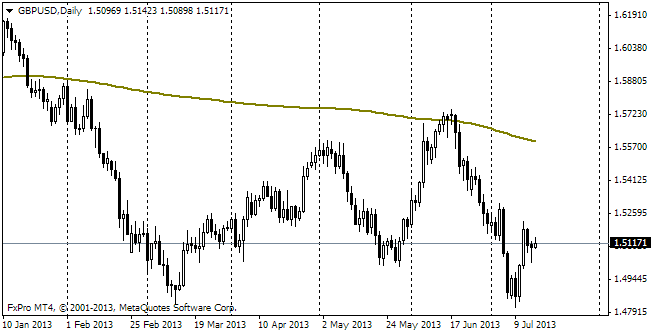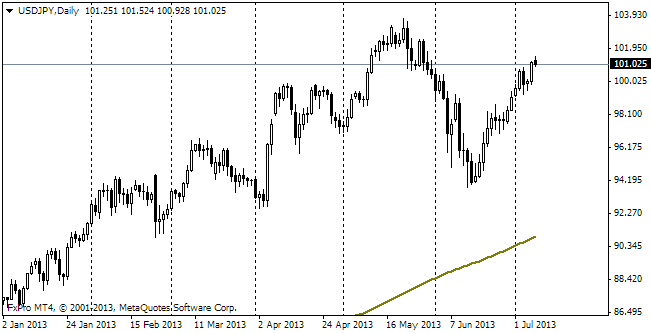EUR/usd
We were right – Germany is not the entire eurozone. Its price stability hasn't helped to keep the rates for the whole region unchanged. According to Eurostat's preliminary inflation estimate, published yesterday, the annual inflation rate in September fell to 0.3%. It corresponds to the rates expected at the beginning of the week, but after the reassuring German statistics traders have already managed to build retention of this index at 0.4% into their strategies. This situation intensifies pressure on the ECB, urging the latter to announce the beginning of the bond buying programme. On speculations that it will happen already this Thursday, the single currency has tumbled down to 1.2560, i.e. to the lowest rates since September 2012. Now doubts that the currency pair will continue falling (down to 1.20, where it was seen two and four years ago) are few. Six years ago the low was higher – 1.2350. The current rates of the single currency are not something outrageous. However, for short-term traders the situation is very dangerous as the depreciation is going on almost without pullbacks and, moreover, following the volatility decline, which forced many to use a higher leverage in their trades. Only the disappointing US statistics are probably able to improve the situation and give rise to a normal correction. For that they need to be really poor, like it was in the previous month, for example. Today the markets will look for signs of strength or weakness of these rates in the report of ADP. Analysts expect another portion of statistics above 200K. This report a month ago also supposed the same growth. If the rates are around 150, it will probably cause short-term profit-squeeze in USD out of cautiousness before the release of the official data on Friday. But even in this case bears will hardly let the pair above 1.27 until the release of payrolls statistics.
GBP/USD
The pair keeps sliding down. Looking closer at the decline from July till September, the further rally of recovery after the news about the referendum perfectly fit into the Fibonacci parameters. In this case the decline may continue and it is particularly important to be careful near the preceding lows of 1.6050, which should be the field of a battle for the trend. The target of the decline can be set at 1.5360. And this is already a comfortable level for the pair, which was crossed up and down each out of the last seven years.

USD/JPY
Bulls has done it. They've managed to push the pair up to hit 110. This round rate has been reached much earlier than we believed a month ago. Formally the current target can be set at the preceding high of 110.60, but it will hardly have as much stops as the round level of 110. Now the main question which the market should answer is what will be earlier – 100 or 120. The latter has much more supporters.

gold
Though Gold is in the downward phase, it doesn't hurry to tumble down. The current reduction of the price can be fully attributed to growth of the base currency, which makes the current decline different from that at the beginning and in the middle of the month. Gold is now trading at 1205, which is very close to the round rate of 1200 and support of 1185, which the instrument had in 2013. We expect that near these levels the fight of bulls and bears can become tenser, but incline to the idea that the continuous growth cycle of Gold has come to its end and that the metal will depreciate against tightening of the US monetary policy.
